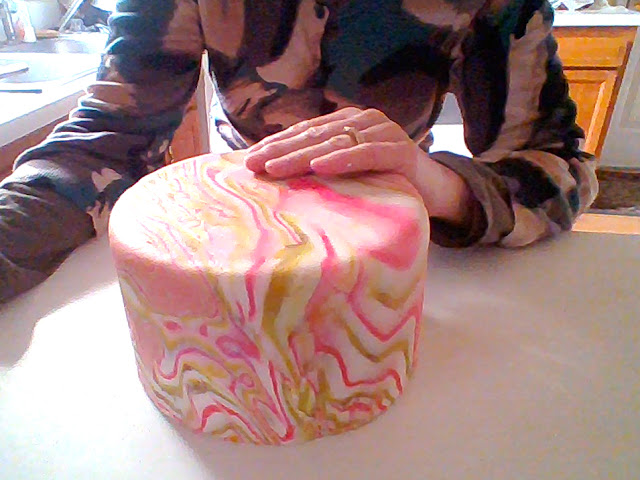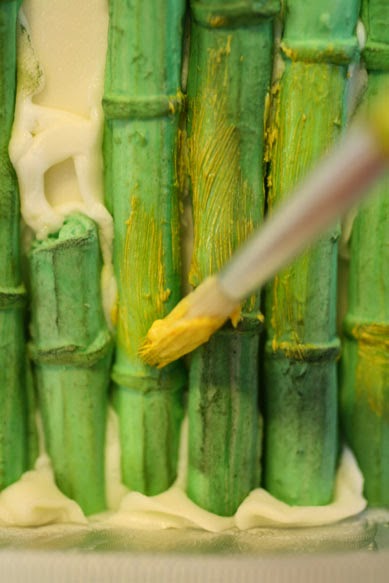Since I’ve been testing food coloring recently, I got some McCormick food coloring and decided to see how it looked and what kind of colors it created. It’s the classic home-baker food coloring that our moms all used, and that you probably have in your own pantry, but how does it compare to other types?
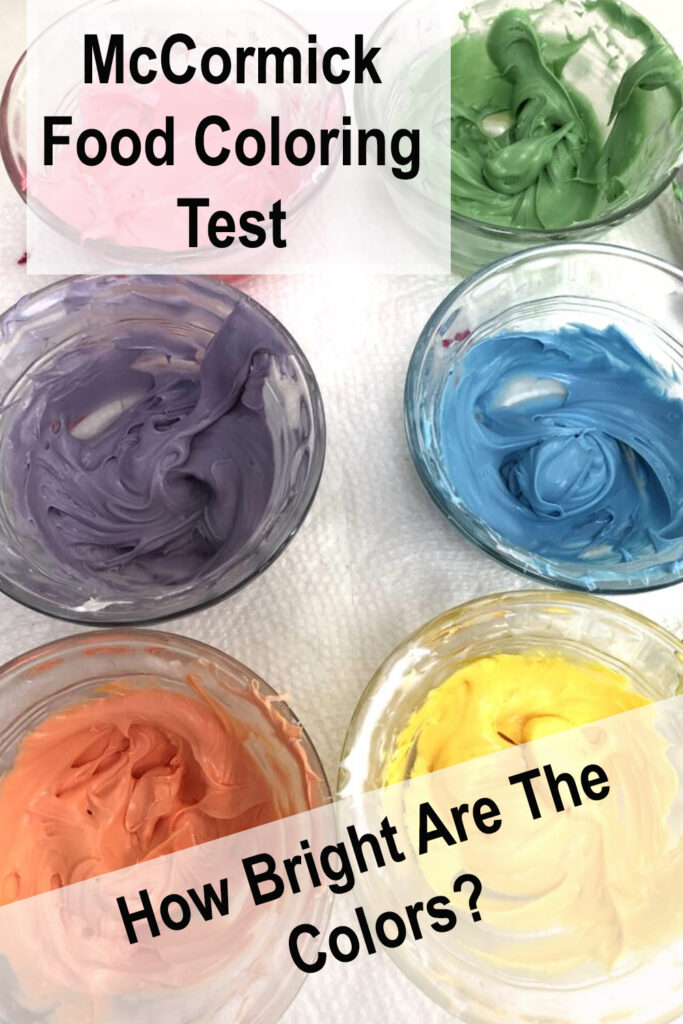
This article includes affiliate links that will pay a commission if they’re used to purchase something. As an Amazon associate, I earn from qualifying purchases.
McCormick food coloring.

McCormick is the classic, and it’s readily available, so it’s a common choice. It used to come in four colors, but the box that I got only had red, yellow, and blue. That’s fine, those colors will mix to make up the other ones, but it does mean you’ll be doing a little more mixing to get the right color.

The bottles have a little seal on the bottle neck, so you have to take the caps off and remove those first, then replace the caps that have a flip cap and dropper on them.
I started with about 1/4 a cup of white icing and 2 drops of food coloring in each dish because I would have to mix one drop of each color to make the green, purple, and orange.
In case you don’t know, the primary colors are red, blue, and yellow. So red+yellow=orange, blue=yellow=green, and red+blue=purple.
Different amounts of each color will give you different shades of the secondary color. For example, if you want a blue-green, you’ll need to add more blue than yellow to the mix. If you want the green to be more yellowish green, you’ll need to have less blue in the mix.

This photo show the first mix, with two drops of the primary colors, two drops of the red, and two drops of the blue. The green is one drop of yellow and blue, purple is one drop of red and blue, and orange is one drop of red and yellow.
The red was pretty light, and ended up being more of a darkish pink. The secondary colors were also light, and the blue was light. The yellow was pretty bright even with only two drops in there.

With two more colors of the primaries and one more of each of the colors to make the secondary ones, they were getting darker. The red was still pink, though.

The final colors.
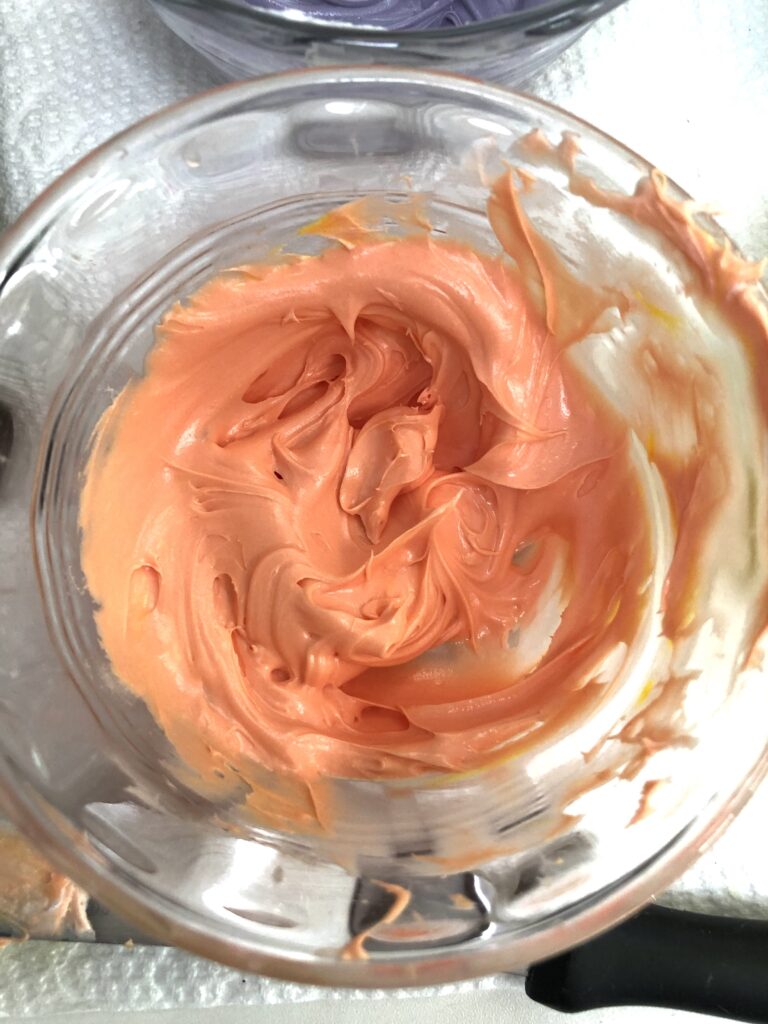
This was the final color of orange…It was 2 drops of red and 2 drops of orange in about 1/4 cup of white icing.
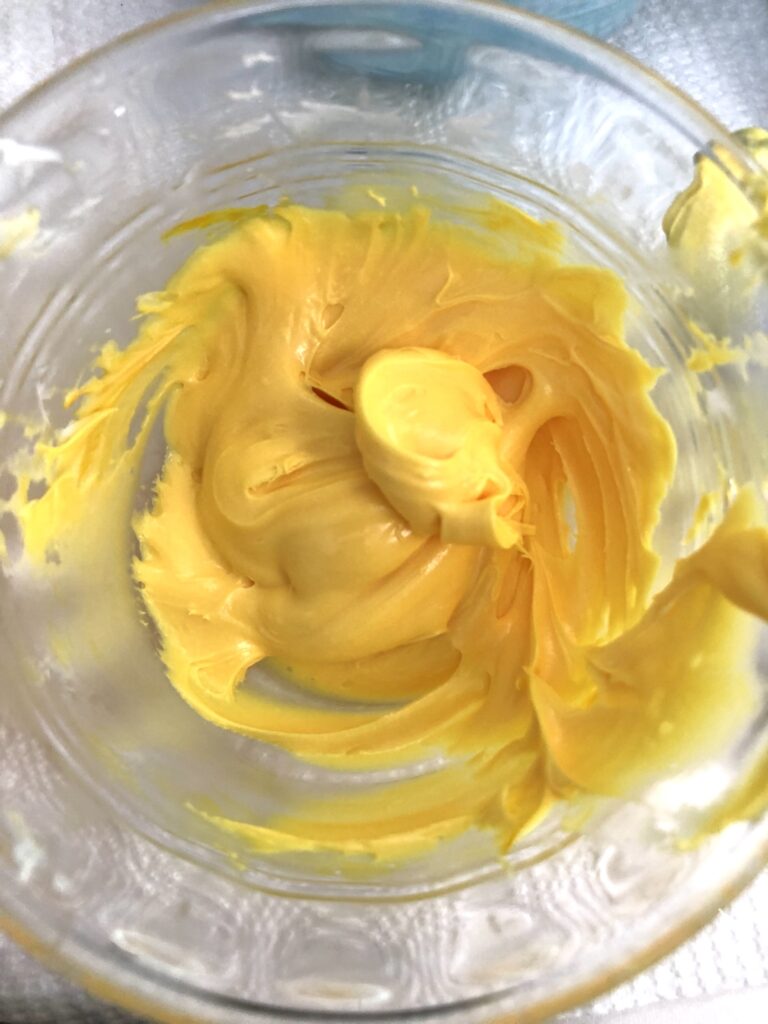
This is the yellow, it’s 4 drops of food coloring in 1/4 cup of icing. The yellow food colorings seem to give you a pretty good bright color faster than the other colors do. It was the same with the natural food coloring that I tested out (See that color test here.)

Here’s the green…This was 4 drops of yellow and 4 drops of blue.
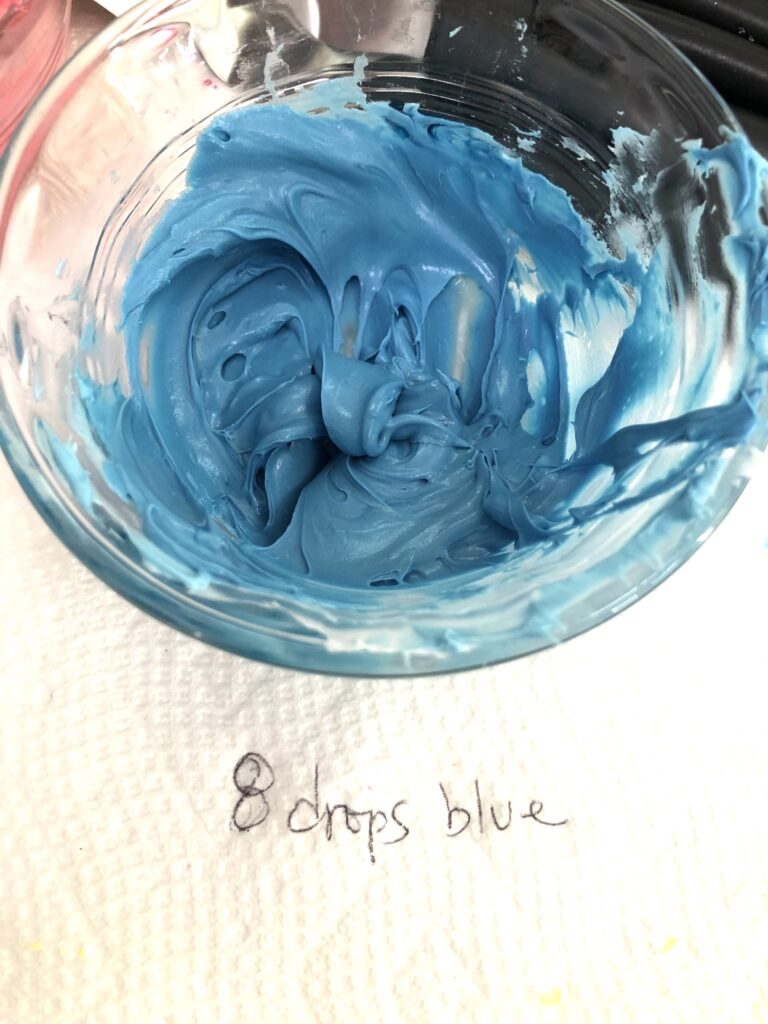
The blue took a little more color to make the darker shade, and you would have to add a lot if you were using more icing. This was 8 drops of color in 1/4 cup of white icing.

This purple was 4 drops of red and 4 drops of blue. It will probably get darker if it sits there for a while.
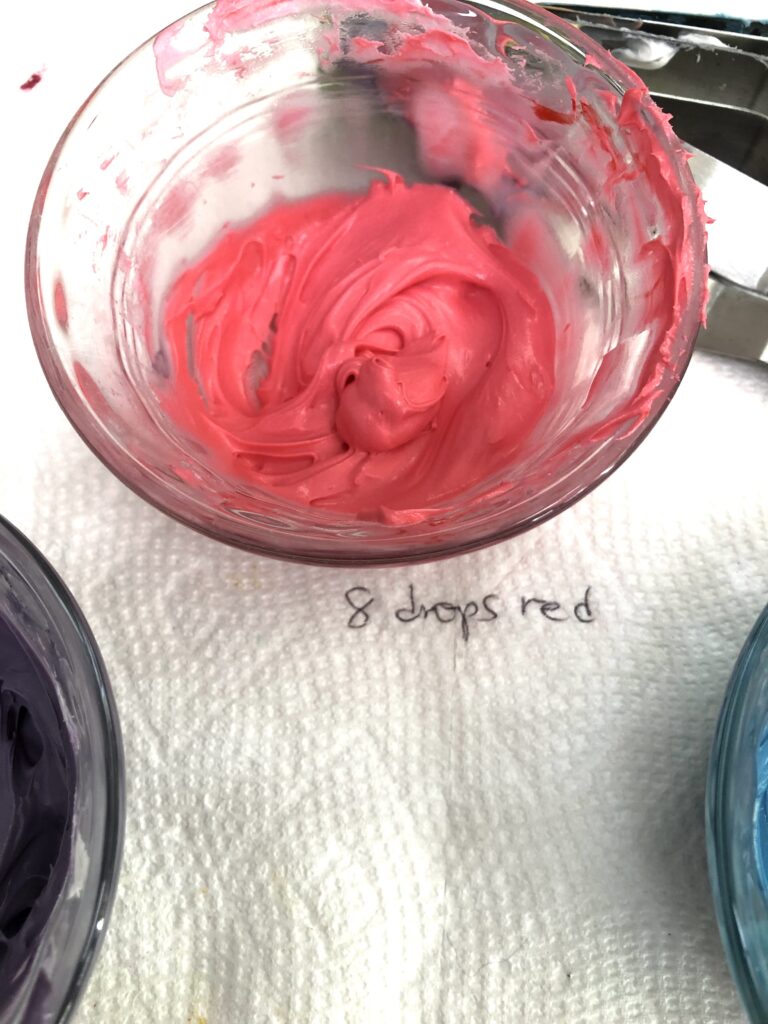
And this is the red…It took 8 drops of the red, which is going to end up being A LOT in a larger amount of icing. This color was red but still light enough that it looked like a dark pink/light red. Leaving it alone and letting the color deepen overnight would be a good idea if you wanted it to be darker. But you would need a ton of this to make a fire engine-type of red color, and that could make the icing taste bitter.
For colors like red and purple or any darker color, it would probably be easier to use a professional food coloring that will give you a concentrated color. If you don’t need the color to be super bright, these food colorings would be fine, though.
Click here to see McCormick Food Coloring on Amazon.
The final verdict.
These food colorings are fine for normal icing and for colors that you don’t need a specific, bright color. For designs where you’re looking for a really bright red or other colors, you might need to use a lot of it.
It might be easier to get a concentrated gel color for bright, specific colors that are harder to mix.
You can see a comparison of some professional gel colors in these food coloring comparison articles: Pink, Brown and Orange, Yellow, Blue.
The advantage of the McCormick brand is that it’s readily available in grocery stores and online, but the tradeoff is that the colors aren’t as concentrated as gel colors are.
